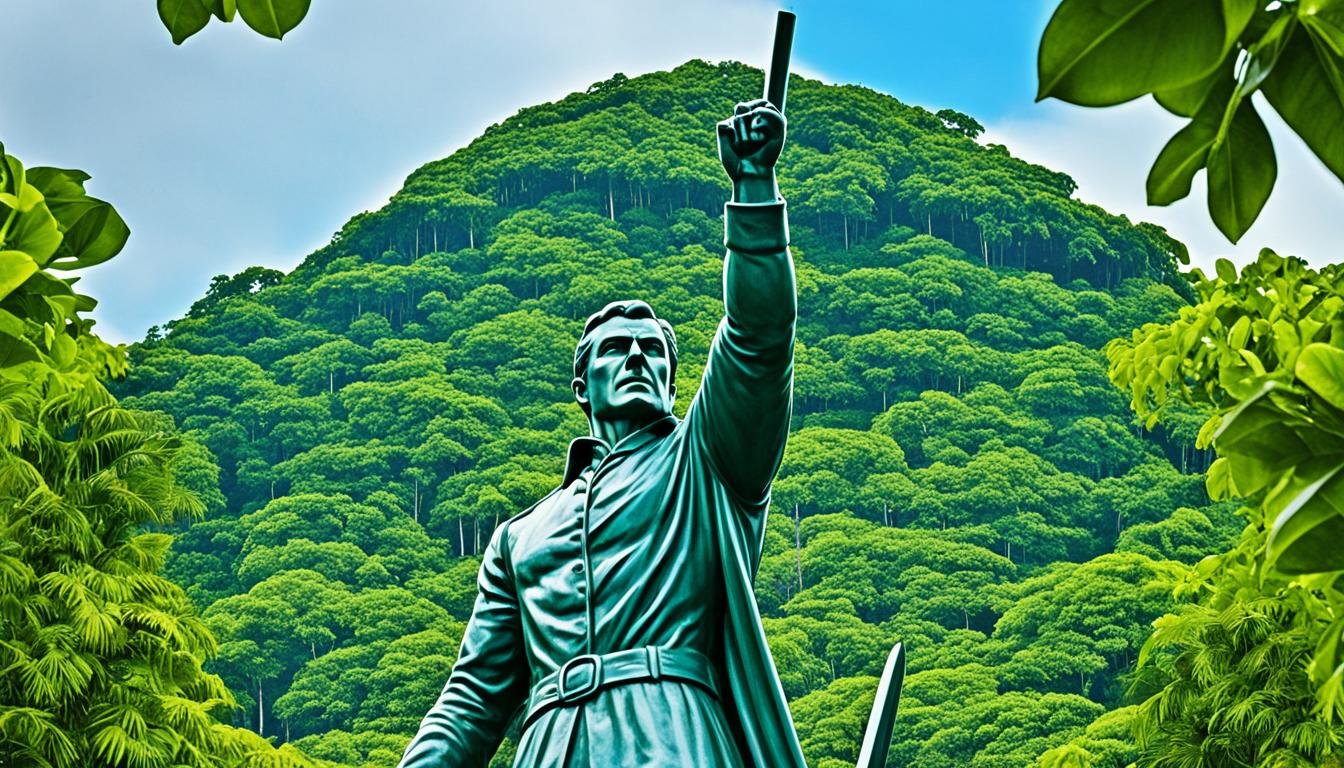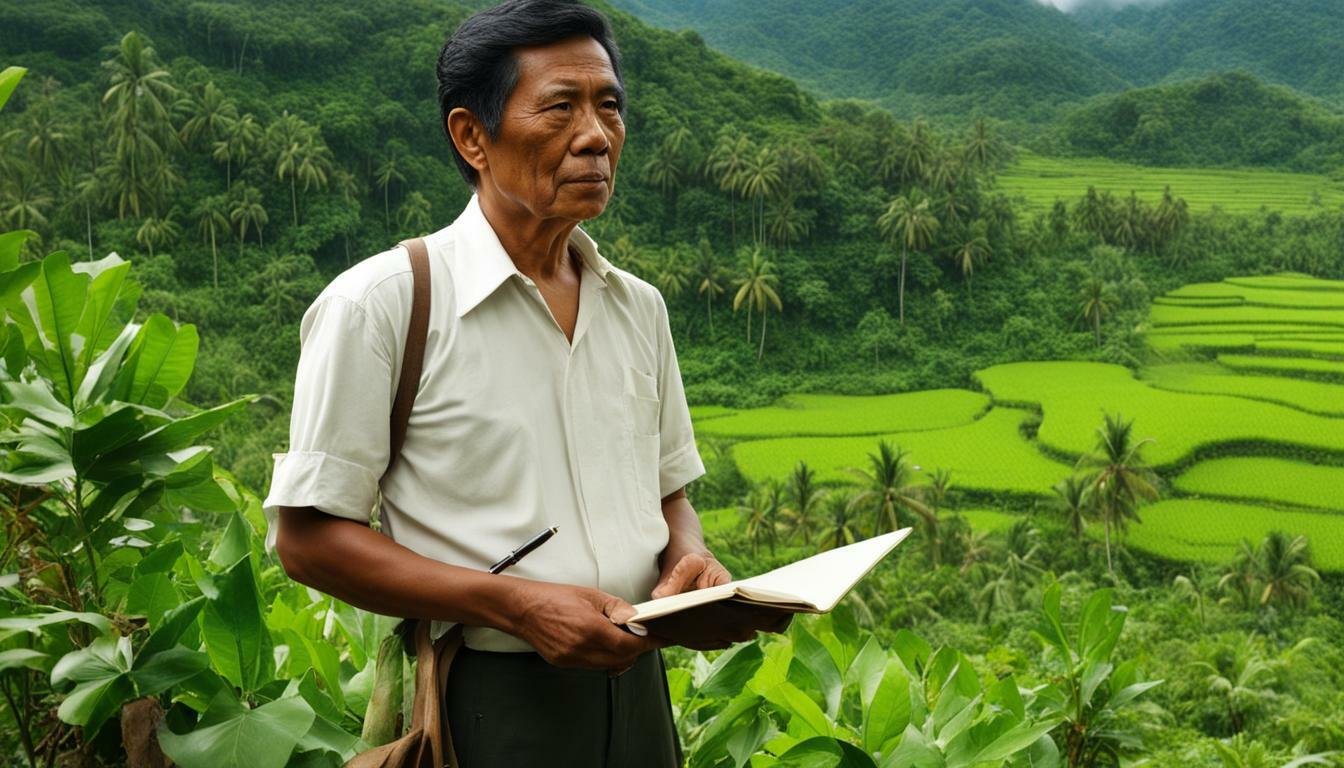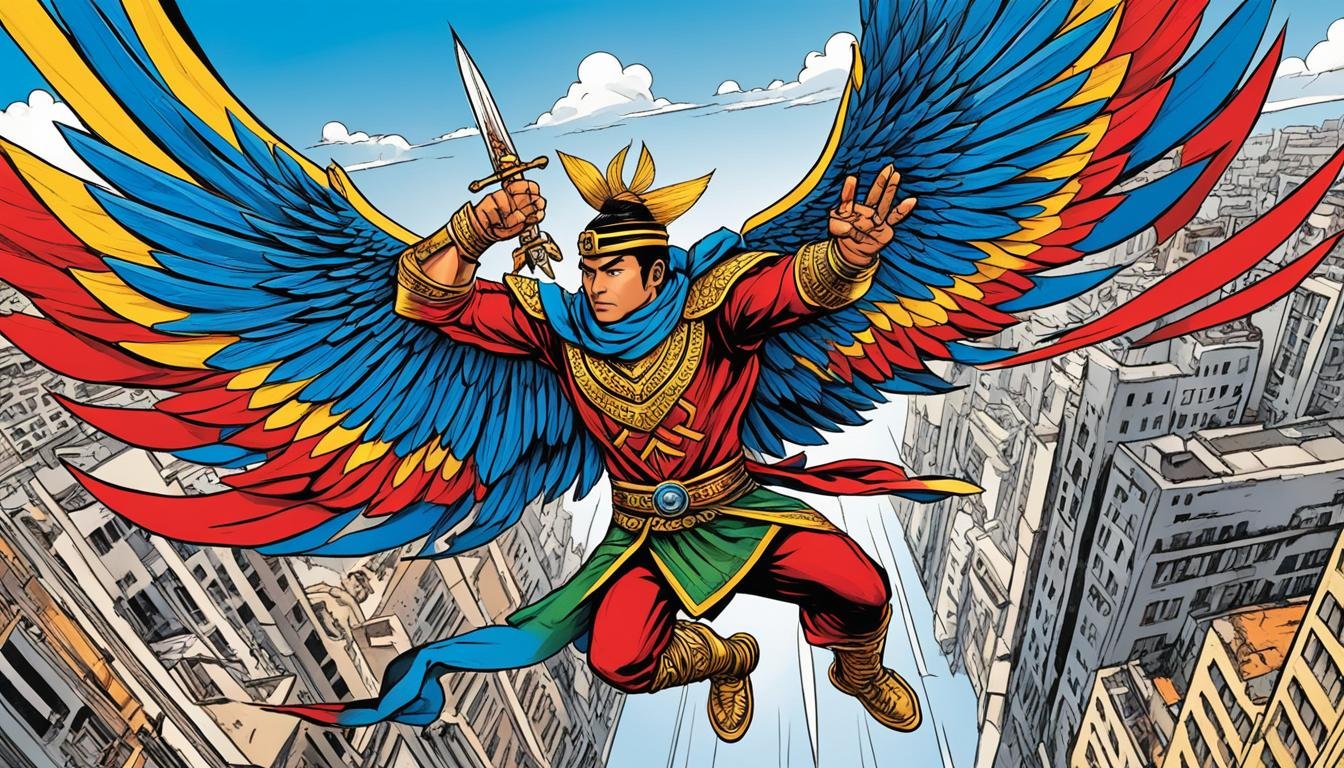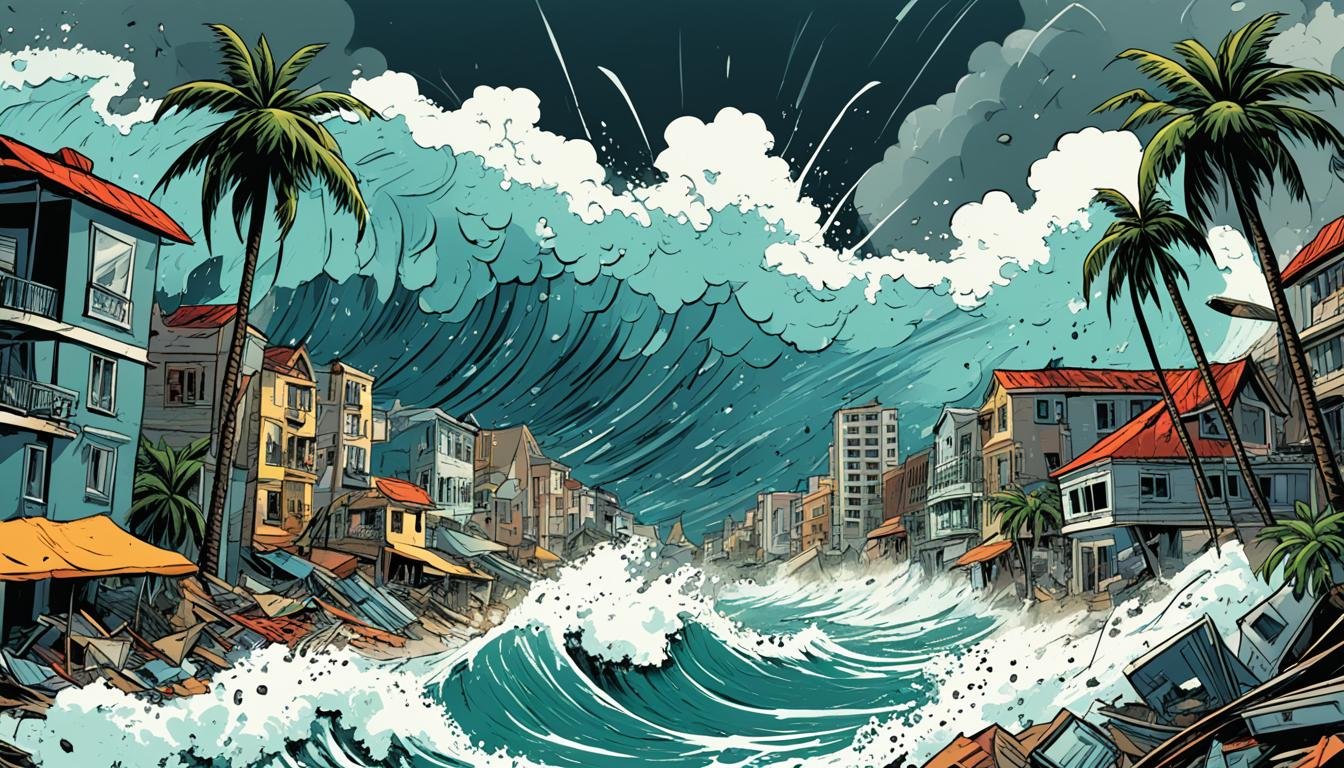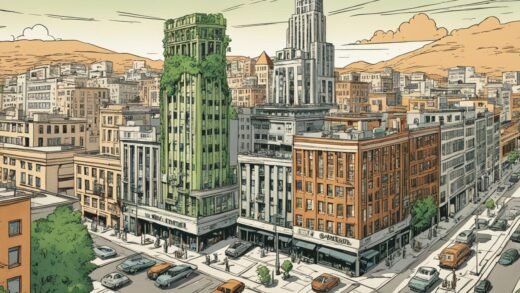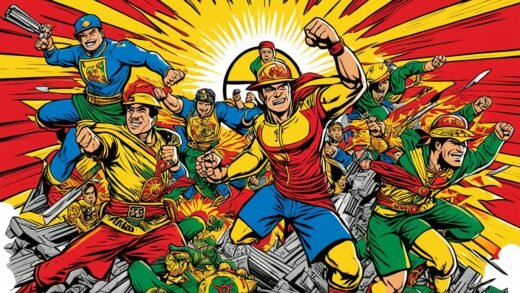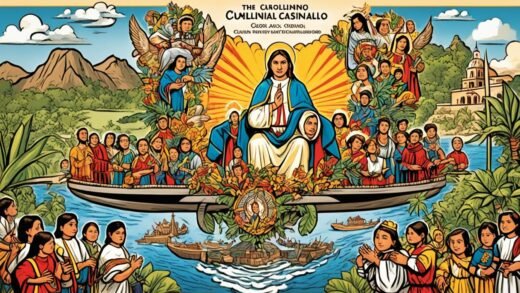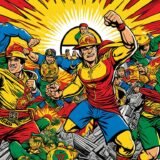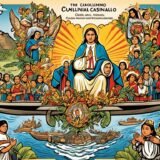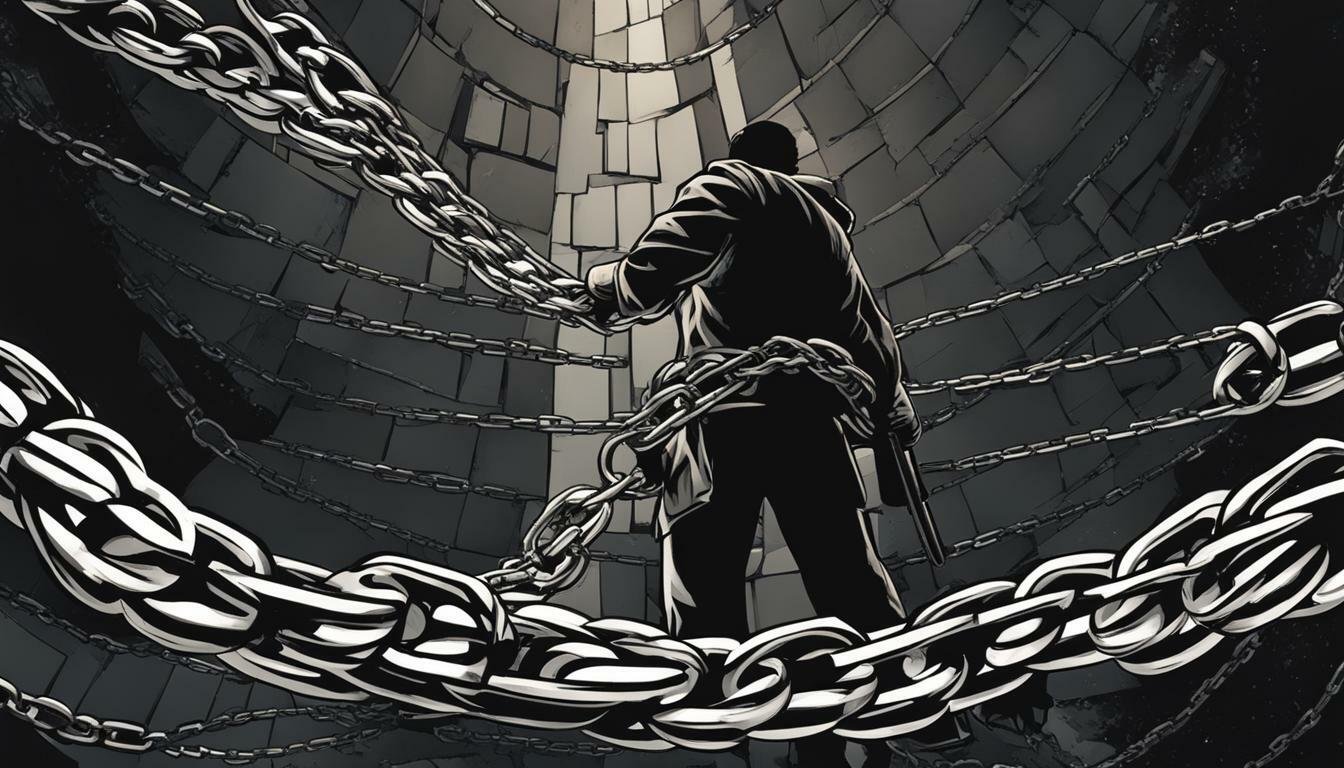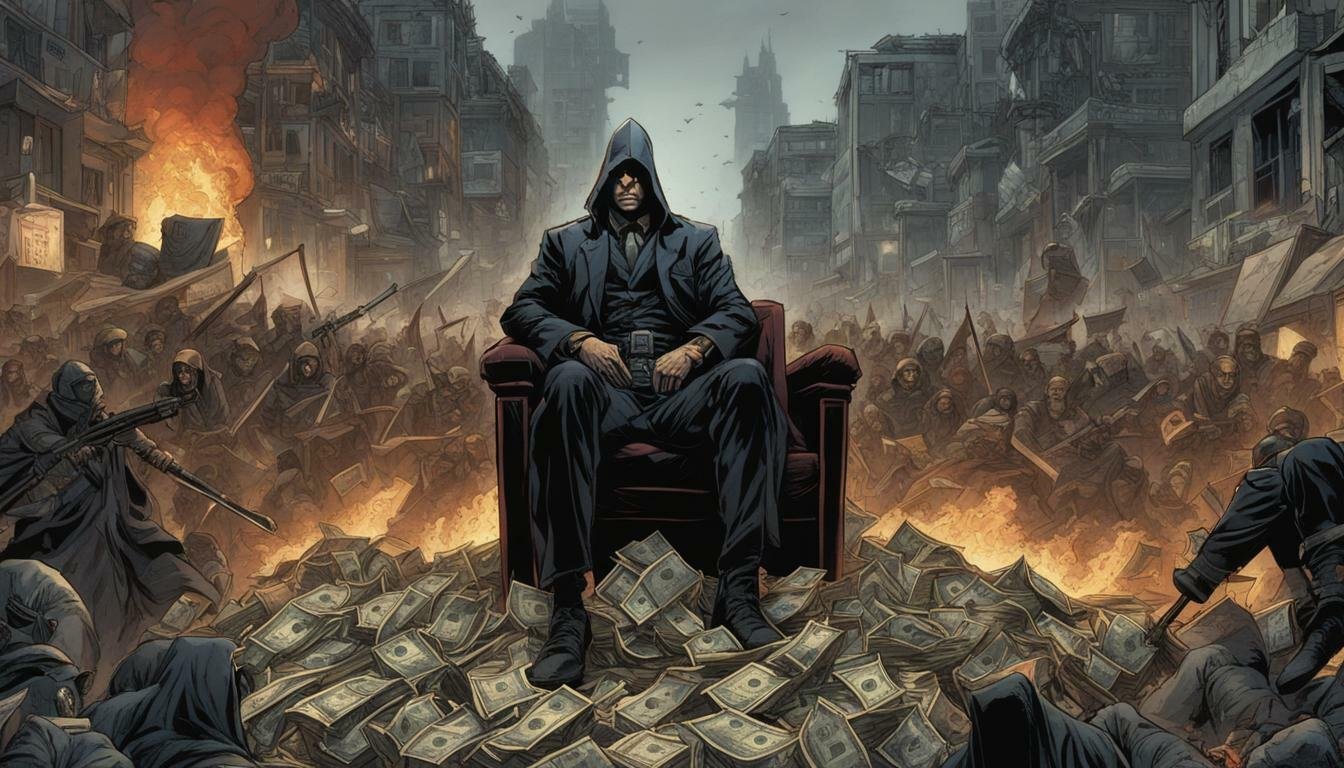Andres Bonifacio: Hero of the Philippine Revolution
Among the pantheon of Filipino heroes, the legacy of Andres Bonifacio, the Father of the Philippine Revolution, soars with an undying resonance. Against the backdrop of a nation in chains, Bonifacio, a self-made Filipino revolutionary leader, ignited the flames of Philippine independence. His extraordinary journey from humble beginnings to leading the revolutionary movement carved an indelible mark on Philippine history. This native son of Manila fervently believed in the freedom of his country, emerging as a beacon of hope for all Filipinos and solidifying his status as an enduring Filipino hero.
Key Takeaways
- Andres Bonifacio’s role as the catalyst of the Philippine Revolution highlights his significance in the fight for independence.
- Understanding Bonifacio’s leadership in the revolutionary movement sheds light on his impact on Philippine history.
- Bonifacio’s strategic and charismatic legacy as a Filipino hero inspires national pride and collective identity.
- As the Father of the Philippine Revolution, Bonifacio’s multifaceted contribution to Philippine independence continues to be commemorated.
- Tracing the bold steps of Andres Bonifacio is key to appreciating the complexity and passion of the Filipino struggle for sovereignty.
The Legacy of Andres Bonifacio in Filipino History
Andres Bonifacio, hailed as the Filipino nationalist who wielded immense influence over the dawn of the Philippine Revolution, is forever etched in the annals of history as a national hero. His story is a testament to the indomitable spirit of Philippine nationalism, and the values he championed continue to inspire the nation and resonate in its culture and consciousness.
The contribution of Andres Bonifacio extends beyond the battlefields; his vision for a free Philippines continues to act as a rallying cry for patriotism and is commemorated throughout the country, particularly on days marking his birth and death. These annual observances are not mere remembrances but a manifestation of the Filipino people’s ongoing commitment to honor his legacy and his irreplaceable role in shaping their identity.
Underscoring his importance, the following table encapsulates the milestones of Bonifacio’s life that galvanized a nation and symbolized his undying influence on Philippine history.
| Event | Date | Significance |
|---|---|---|
| Birth of Andres Bonifacio | November 30, 1863 | Marking the arrival of a future revolutionary leader |
| Founding of Katipunan | July 7, 1892 | Bonifacio establishes the secret society aimed at overthrowing Spanish rule |
| Start of the Philippine Revolution | August 23, 1896 | An armed revolt begins under Bonifacio’s command |
| Execution of Bonifacio | May 10, 1897 | Bonifacio’s martyrdom stirs national sentiment and resolve |
| Bonifacio Day | Annually on November 30 | A national holiday celebrating his life and his contributions to the nation’s independence |
Amidst the pages of Philippine history, Andres Bonifacio remains a central figure whose actions catalyzed pivotal changes and whose memory invokes reflection on the cost of freedom and the value of sovereignty.
His role in the Philippine Revolution, a period marked by fervor and sacrifice, imbues current and future generations with a sense of purpose and a commitment towards upholding the ideals Bonifacio fought for—liberty, unity, and equality. Andres Bonifacio’s contribution, from a broader perspective, wasn’t only revolutionary—it was the bedrock upon which the Filipino identity was built and still stands.
Andress Bonifacio’s Early Life and Struggle for Education
The story of Andres Bonifacio, a key Filipino hero and a prominent figure in Manila history, begins in the city’s notorious district of Tondo, Manila. The early death of his parents thrust upon him the mantle of responsibility, shaping him into the self-educated patriot known in every Filipino independence narrative. His life journey is a testament to the fact that the pursuit of knowledge knows no social bounds and that true leaders emerge through adversity.
Childhood in Tondo: The Formative Years of a National Hero
Born into the dense cultural mosaic that is Tondo, Andres Bonifacio’s exposure to a variety of influences would underpin his understanding and embrace of the Filipino identity. Growing up here planted the seeds for his comprehensive vision of unity, which would later be the bedrock of his revolutionary leadership and give rise to the undying legend featured in heroes of Philippine history.
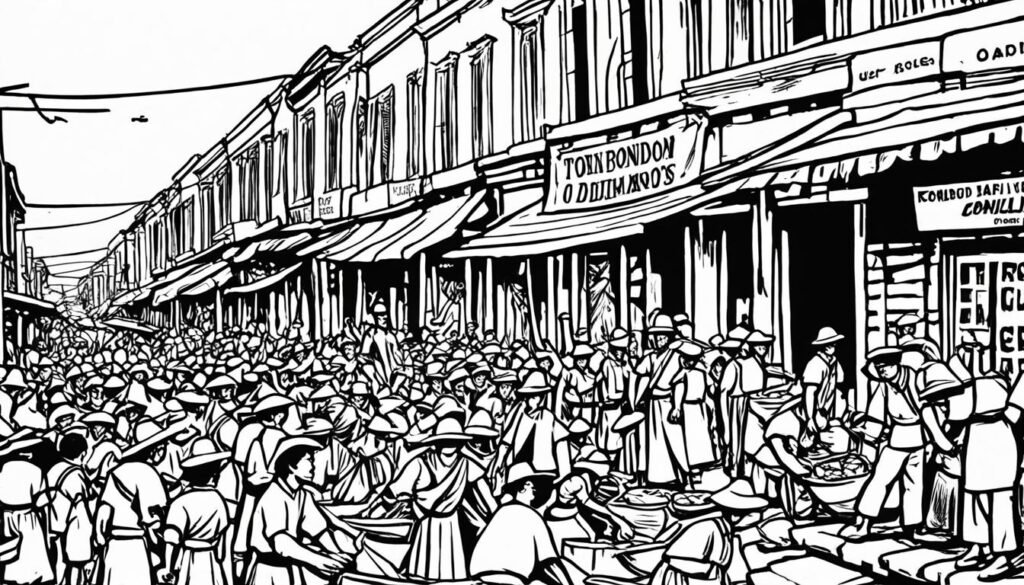
Self-Education and the Pursuit of Knowledge
The absence of formal schooling did little to dampen Bonifacio’s insatiable appetite for learning. Primary sources indicate that Bonifacio, the self-educated visionary, delved into the realm of revolutionary ideas and philosophical reflections, which fanned the flames of Filipino independence. His engagement with a world of knowledge, from the legal complexities detailed in Philippine codes to the inspirational narratives of the French Revolution and Rizal’s novels, illustrated his growth into a dedicated and well-informed Filipino revolutionary.
These formative experiences propelled Bonifacio to articulate a unique ethos that contemplated freedom and unity for the nation, which made him one of the heroes of Philippine history, championing the cause that would ignite the fervor for Philippine independence.
Personal Life: Tragedy, Love, and Family
The life of Andres Bonifacio y de Castro, a revered Filipino hero and a Katipunan leader, was not devoid of deep personal struggles and profound emotions. His journey was marked not only by his pursuit of freedom but also by personal loss and resilient love. After the heartbreaking death of his first wife from leprosy—a tragedy that cast a shadow over his early life—Bonifacio was fortunate to find solace and companionship once more with Gregoria de Jesús.
Despite the objections stemming from his Masonic ties, their love triumphed, and they were united in a bond strengthened by shared ideals and mutual support within the revolutionary movement.
A testament to their commitment, Andres and Gregoria’s marriage was celebrated through both Catholic and Katipunan rites. Their lives were inextricably linked not only in matrimony but also in the shared sacrifice for the Philippine revolution. Tragically, their union was soon marred by the loss of their infant son to smallpox—an affliction that brought personal grief into the heart of their collective struggle.
| Life Event | Impact on Bonifacio |
|---|---|
| First Wife’s Death | Introduced profound personal tragedy into Bonifacio’s early life |
| Marriage to Gregoria de Jesús | Embodied a union of love and revolutionary fervor |
| Loss of Infant Son | Deepened their personal sacrifice and dedication to the cause |
Their personal tribulations did not hinder their revolutionary activities. Instead, such events underscored the extent of what was at stake for Andres Bonifacio, Gregoria de Jesús, and their contemporaries. In the face of adversity, they continued to fight passionately for a future where such tragedies would not befall a free Filipino people.
Launch of La Liga Filipina and Bonifacio’s Political Awakening
The embattled soil of the Philippines in the late 19th century served as a theater for the rise of a powerful movement towards self-determination and sovereignty. Within this fervent milieu, La Liga Filipina emerged as a beacon of reform and progress. It was here, amid the call for political change, that Andres Bonifacio, an impassioned Filipino nationalist, experienced a profound political awakening.
Bonifacio’s Initiation into La Liga Filipina
The Filipino independence movement saw a pivotal moment with Bonifacio’s immersion into La Liga Filipina, an organization spearheaded by the illustrious Jose Rizal. The Liga’s commitment to peaceful reform within the colonial landscape of the Philippines inspired many revolutionary minds. Bonifacio, a Filipino revolutionary at heart, was no exception; his initiation signified the beginning of his noteworthy journey towards advocating for Philippine independence.
From Advocacy to Action: The Disbandment of La Liga Filipina
However, the hopeful existence of La Liga Filipina was short-lived. The Propaganda Movement faced a drastic setback with the arrest and subsequent exile of its leader, Rizal. The disbandment of La Liga Filipina in the wake of these events propelled Bonifacio towards a path of urgent revolutionary action. Fueled by the dream of Philippine independence, Bonifacio revitalized the aims of the disbanded La Liga, ultimately laying the groundwork for the legendary katipunan uprising—a movement that would forever alter the course of Philippine history.
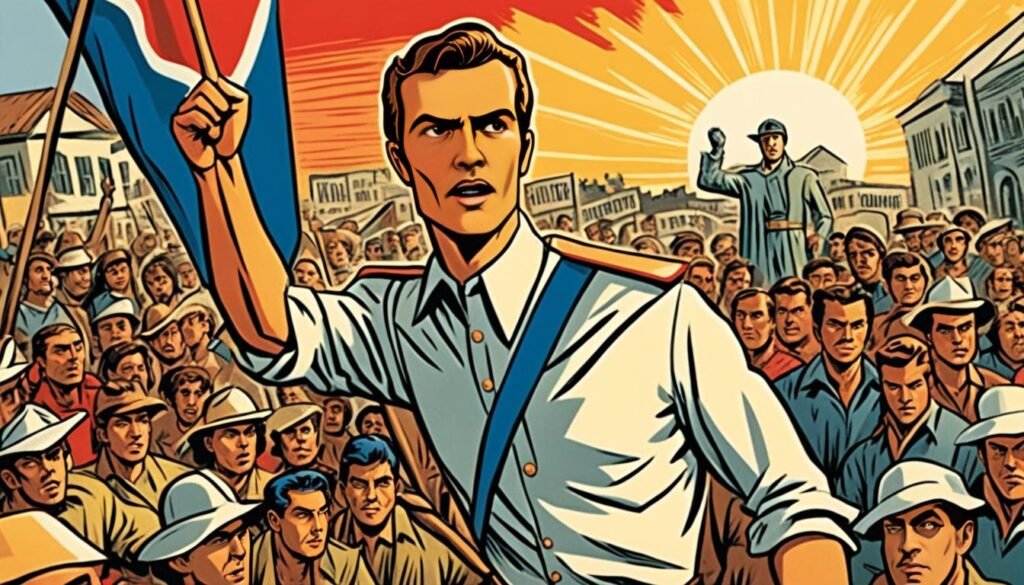
In the vacuum left by Rizal’s departure, Bonifacio transitioned from a member advocating for reform to a leader fighting for absolute independence. His fiery spirit and tenacity not only kept the spirit of La Liga Filipina alive but ignited the flames of the Philippine Revolution. It marked a historical pivot from enlightened discourse to armed struggle, setting the stage for the nation’s tumultuous quest for sovereignty—a quest that would, in time, bring forth the independence the Filipino people yearned for.
The Formation and Ideals of the Katipunan
The Katipunan, a name that echoes the ferocity of the revolutionary movement led by Andres Bonifacio, acts as a cornerstone in the history of the Philippine Revolution. Conceived in the smokes of secrecy and veiled meetings, the society represented the zenith of an independence movement burning with the yearning for freedom. The Katipunan’s inception is not merely a tale of formation; it is the knitting of Filipino aspirations into a tapestry of shared destiny, united under the warm, unequivocal embrace of liberty.
In their pursuit, the Katipuneros held fast to principles that saw the endemic oppression of their people, not as a permanent sight, but as a challenge to be overcome through unity and sheer will. This clandestine society, lit by the passion of its members, formed the machinery behind the propulsion of an ideological transformation, one that sought to dismantle colonial fetters and herald the birth of a sovereign nation.
Under the guidance of Andres Bonifacio, the Katipunan burgeoned into a nationalistic entity, drawing members from across the archipelago. Each member, awakened by the society’s clarion call, saw in the Katipunan a path to the coveted dream: a future unmarred by subjugation — where each man and woman could proudly stand as equals in their own land.
The ethos of the Katipunan was etched into the consciousness of its members through oaths, rituals, and writings that stirred the soul towards the inalienable right of self-rule. The society’s tenets, shrouded from the prying eyes of the colonial powers, wove together the fabric of what would become a rallying point in Philippine history. The cry for freedom, borne from the hearts of an oppressed people, found its voice in the stalwart actions of the Katipunan.
“The unity of the Filipino people
These words resonated as a primary ideal of the Katipunan, transcending the mere act of gathering to become the fulcrum upon which the revolutionary lever would pivot; dislodging centuries-old dominion over an archipelago rife with potential and the resolute spirit of its people. As we delve deeper into the caverns of the Philippine’s storied past, we find in the most indistinct whispers and subtle nuances, the immutable traces of the bravery of Bonifacio and his contemporaries — architects of a movement that would tread the perils of obscurity to usher an era celebrated on every page of Philippine history.
Bonifacio’s Role as the Supremo of the Katipunan
The distinguished Andres Bonifacio, renowned as the Supremo or the supremo ng katipunan, embodied the spirit of the Filipino independence movement. His leadership was pivotal in rallying the Katipunan towards the collective dream of a sovereign nation, free from colonial chains. It was under his guidance that the ideals of the Philippine independence movement were forged into a concrete blueprint for revolution.

Adopting the Pseudonym “Maypagasa”
In the hidden corridors of Philippine history, Andres Bonifacio, the revolutionary hero, took on the alias “Maypagasa”. This pseudonym not only concealed his identity but also symbolized the undying hope he instilled in the hearts of his brothers-in-arms. As a Filipino hero, his role transcended beyond military stratagems; he became an emblem of hope, urging his fellowmen to envision a future filled with freedom and equality.
The Revolutionary Writings and Commandments of the Supremo
The pen, in the hands of Andres Bonifacio, was employed with as much precision and passion as a sword. His writings, dense with the aspirations and decrees of the Katipunan, were crucial in disseminating the core principles needed to fortify the collective resolve of the Filipinos. These documents, carefully drafted and masterfully articulate, etched out the pathway toward independence and became the commandments by which every Katipunero lived.
| Document Title | Purpose | Impact on the Katipunan |
|---|---|---|
| Decalogue of the Katipunan | To outline the ethical guidelines for members | Unified the moral compass of the revolutionaries |
| Katipunan Codes | Secret communication and operational security | Enabled strategic planning and coordination |
| The Kartilla | Education of the Katipuneros in the society’s philosophy | Standardized the ideological foundation of members |
As the Supremo ng Katipunan, Andres Bonifacio’s participation in the Philippine history was not just as a figurehead. He breathed life into the idea of Filipino independence, reinforcing the cause with his every action and declaration. Indeed, Bonifacio’s tenure as the supreme leader marked the Katipunan with an indelible drive for liberty, characterizing him as the essential beacon of hope in the Philippine independence movement.
The Fateful Cry of Pugad Lawin and the Start of the Revolution
The momentous Cry of Pugad Lawin echoes profoundly in Philippine history as the audacious act of defiance that launched the Philippine Revolution. Led by the staunch revolutionary, Andres Bonifacio, this pivotal event signified the collective determination for Filipino independence and marked the onset of the katipunan uprising. The tearing of cedulas symbolized an irrevocable break from Spanish rule, galvanizing a nation to unite under the banner of sovereignty and self-governance.
On that fateful day, amidst the verdant backdrop of Balintawak, a cry resounded—a call to arms that would ignite the fervor of a people oppressed for centuries. The resolve of Bonifacio and his comrades was manifest, their actions setting forth a series of events that would irreversibly alter the course of the archipelago’s destiny.
To better understand the significance of the Cry of Pugad Lawin, the following table presents key aspects that define its historical impact:
| Date | Leader | Action Taken | Significance |
|---|---|---|---|
| August 23, 1896 | Andres Bonifacio | Tearing of cedulas | Symbol of defiance and the start of the uprising |
| Post Cry | Katipuneros | Armed engagement | Shift from peaceful reform to armed revolution |
| Outcome | Filipino revolutionaries | Spread of the revolution across the Philippines | Mobilization of the Filipino masses for independence |
By the indomitable spirit of Andres Bonifacio and his unwavering commitment to free his motherland, the Cry of Pugad Lawin stands as a testament to the enduring fight for freedom. It was here that the dream of a sovereign Filipino nation took its first breath, inspiring countless others to nurture and sustain it through the tempest of revolution.
Tragic Downfall and the Power Struggle with Emilio Aguinaldo
The quest for Philippine independence was marred by internal discord, epitomized by the clash of two revolutionary icons: Andres Bonifacio and Emilio Aguinaldo. In the vortex of the Philippine Revolution, a simmering power struggle evolved, forever altering the course of the nation’s history.
Bonifacio’s Declining Influence in the Revolution
As the Philippine Revolution escalated, the once solid standing of Bonifacio eroded against the rising prestige of Emilio Aguinaldo. His military triumphs rang louder than the call to arms once made by Bonifacio, causing a pivot in the revolutionary gaze. With Aguinaldo’s ascendancy, the rivalry for leadership sowed seeds of fragmentation within the Filipino revolutionaries.
The Controversial Tejeros Conference and Its Aftermath
The Tejeros Conference became the flashpoint of this leadership conundrum. This convention, depicted as a democratic recourse, turned the tide against Bonifacio, favoring Aguinaldo and giving birth to a schism fraught with political implications. The Magdiwang faction, fiercely loyal to Bonifacio, found itself side-stepped, bringing the internal conflict to a head.
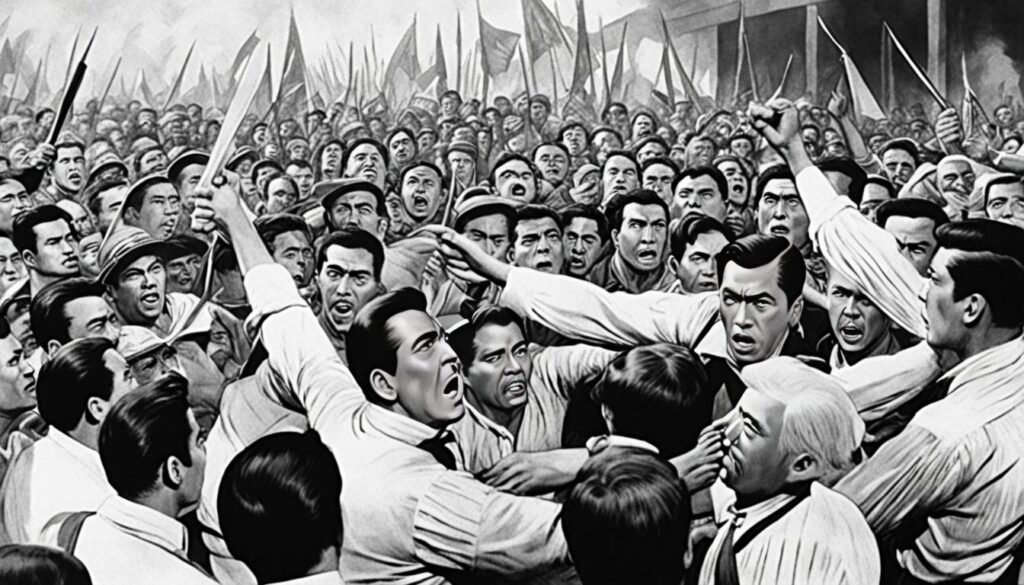
The election’s aftermath spelled not just political defeat but a personal tragedy for Bonifacio. The establishment of a new government with Aguinaldo at the helm heralded not just a change in leadership but an impending downfall for the erstwhile leader of the revolution. What followed was a series of events that transformed Bonifacio from a symbol of unity to an emblem of sacrifice for the cause.
| Leadership Attribute | Andres Bonifacio | Emilio Aguinaldo |
|---|---|---|
| Revolutionary Role | Founder of the Katipunan | Young General from Cavite |
| Support Base | Broad-based across different provinces | Strong local support in Cavite |
| Military Strategy | Guerrilla tactics | Conventional military engagements |
| Leadership Style | Charismatic, people-oriented | Authoritative, results-driven |
| Outcome at Tejeros | Outmaneuvered, lost presidency | Elected as President of the revolutionary government |
| Historical Legacy | Martyr of the Philippine Revolution | First President of the Philippines |
In retrospect, the rivalry for leadership between Bonifacio and Aguinaldo reflects the complexities of the Philippine Revolution. It serves as a poignant reminder of power’s ephemeral nature and the ultimate sacrifice inherent in the struggle for national freedom.
Martyrdom: The Execution of Bonifacio Brothers
The chapter of Andres Bonifacio, a revered Filipino revolutionary leader, encountered its tragic denouement with the events leading to his martyrdom. On a somber day that would forever be etched in the annals of Philippine history, Bonifacio and his brother Procopio faced the finality of execution. Tried on allegations of treason, they were sentenced to death by the revolutionary government led by Emilio Aguinaldo. Their execution on May 10, 1897, marked a deep and wounding chapter in the struggle for the country’s sovereignty, a narrative that starkly contrasts with the celebrations associated with Bonifacio Day.
The impact of their deaths transformed Andres Bonifacio’s image from that of a revolutionary leader to a martyr whose life and demise continue to inspire nationalistic fervor. Bonifacio’s dream for independence and sovereign rule for the Filipino people interrupted so abruptly, magnified the conviction and emotional resonance of his cause. The execution, laden with controversy and internal political strife, remains a poignant reminder of the sacrifices made in the name of revolutionary change and liberation from colonial powers.
In remembering Bonifacio, it is imperative to reflect on both his contributions and his final fate. While Bonifacio’s premature end signifies a moment of profound loss, it has also immortalized his commitment and courage as a pillar for Philippine independence. The ideals he valiantly fought for became a unifying call to subsequent generations, nurturing an undying flame of patriotism and the relentless pursuit of national identity.
As we continue to revisit the story of Bonifacio’s execution, understanding its circumstances fosters a deeper appreciation for the complexity and emotional depth of the Filipino revolutionary period. It is a narrative not only of an ideological battle for freedom but also of the personal costs endured by those who dared to lead it. The execution of the Bonifacio brothers thus remains a cornerstone of reflection on the moral and ethical dimensions of revolutionary struggles.
Assessing Historical Narratives: Bonifacio’s Presidency and Revolutionary Government
Andres Bonifacio y de Castro stands tall in Philippine history as a revered revolutionary leader and a quintessential symbol of the country’s quest for sovereignty. His role during the Philippine Revolution and his subsequent portrayal as the unofficial President of the Philippines evoke profound discussions that delve into the very fabric of Philippine national identity.
Understanding the “Tagalog Republic” Concept
The formation of a proto-state known as the “Tagalog Republic” under Andres Bonifacio symbolized a monumental step towards asserting local sovereignty against colonial rule. Fueled by the struggle for independence, Bonifacio’s vision of unifying the Philippine archipelago under the banner of one native government challenged conventional narratives and posited an alternative form of leadership during a period marked by colonial upheaval and revolutionary fervor. The Tagalog Republic wasn’t merely a geographical term but an inclusive concept for all indigent groups fighting for Philippine liberty.
Debates on Bonifacio’s Legitimacy as the Unofficial President of the Philippines
The designation of Bonifacio as the unofficial President of the Philippines often triggers intense scholarly debate. This deliberation scrutinizes the legitimacy of his leadership and weighs it against the traditional lineage of officially recognized presidencies, which eventually began with Emilio Aguinaldo’s ascendancy. The contention lies in whether Bonifacio’s establishment of a rival revolutionary government was an official act of statecraft, which warrants acknowledgment of his presidential status within the historical context of the nation’s struggle for independence.
Bonifacio’s contributions have elicited unwavering admiration from countless Filipinos, immortalizing him as a cherished Philippine hero. His life and untimely demise encapsulate the essence of sacrifice and dedication to the cause of national unity and self-determination—a narrative that continues to be parsed and retold through the generations.
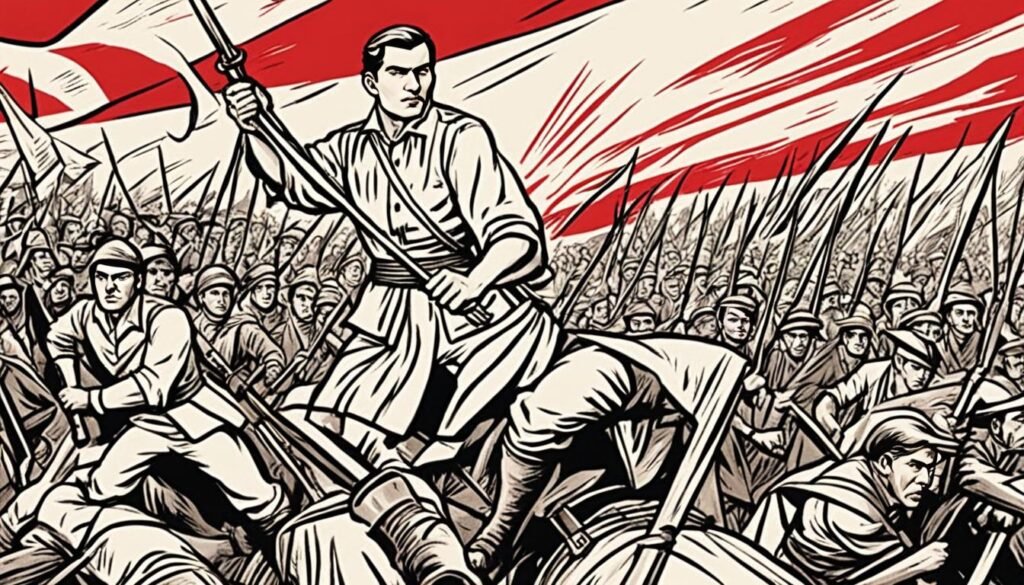
Monumental Reflections: Bonifacio as a Symbol in Philippine Culture
The figure of Andres Bonifacio looms large over the landscape of Philippine history, not just as a paramount national hero and revolutionary hero, but also as a steadfast symbol immortalized in monuments erected in his honor. These culturally significant statues are not mere stone and metal; they are repositories of national pride and markers of a historical journey marked by Bonifacio’s struggle for the country’s independence.
Amidst the hustle of Philippine cities and the serene calm of its provincial areas, monuments dedicated to Bonifacio offer a silent yet powerful narrative of resistance and heroism. They provide visual touchpoints for reflection on the nation’s tumultuous past and the unwavering spirit that Bonifacio instilled in his compatriots. These memorials also serve as a bridge linking generations, conveying the enduring relevance of Bonifacio’s ideals.
| Monument | Location | Significance |
|---|---|---|
| Bonifacio Monument | Caloocan, Manila | Depicts Bonifacio and his men in the act of revolution, symbolizing courage and unity. |
| Bonifacio Shrine | Manila City Hall | Commemorates the life and leadership of Bonifacio, standing near the site of his birth. |
| Bonifacio and the Katipunan Revolution Monument | Divisoria, Manila | Marks the location where Bonifacio and the Katipunan rallied the people to rise against Spanish rule. |
Each monument, a testament to Bonifacio’s sacrifice, continues to inspire Filipinos, reminding them of the price of their freedom and the ongoing significance of their rich heritage. Thus, Andres Bonifacio stands eternally not just in the pantheon of Philippine heroes, but also as an emblem of the nation’s resilience and hope, a true monumental reflection of Philippine culture.
The Influence of Bonifacio’s Ideals on Future Generations
The enduring spirit of Andres Bonifacio, a quintessential Filipino hero, reaches far beyond the historical narrative of Philippine independence. His unyielding commitment to the nation’s autonomy and his democratic ethos have been imparted upon generations, molding the foundation of Philippine education and heritage. Today, Bonifacio’s influence is as palpable as ever, fostering youth inspiration and infusing vigor into the perpetuation of national identity among the Filipinos.
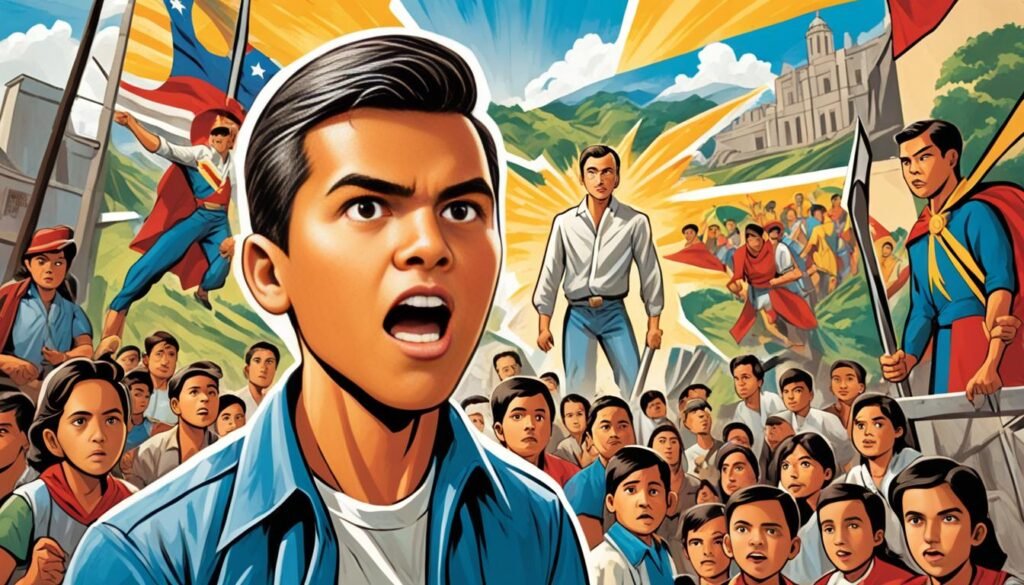
Education and Heritage: Inspiring Filipino Youth
The figure of Andres Bonifacio y de Castro is not just a frozen statue in the plazas of the Philippines but a living, breathing beacon for education. Young Filipinos are taught to draw strength from his self-taught erudition, recognizing the power of knowledge in surmounting socio-economic barriers. His dedication to intellectual empowerment sows seeds of aspiration across the archipelago, advocating for a learned society that values its heritage and the sacrifices made for sovereign independence.
Continuing the Fight for Freedom and National Identity
Andres Bonifacio’s ideals have transcended the bygone epochs of the struggle for independence to animate today’s discourse on sovereignty and national identity. As a paramount Filipino nationalist, his voice resonates through time, urging the youth to uphold the principles that define their country. His legacy is an enduring testament to the ongoing journey towards realizing the full potential of every Filipino, bound together under the banner of a sovereign national identity.
Remembering Bonifacio: National Observances and Commemorations
Each year, Filipinos unite in spirit to honor one of the nation’s most storied heroes, Andres Bonifacio, through various national observances and commemorations. The legacy of Bonifacio is not merely confined to history books but is eternally etched in the hearts and minds of the Filipino people, a remembrance amplified on Bonifacio Day. This pivotal day, steeped in national pride, provides a profound connection to the struggles and triumphs of the Filipino revolution.
Bonifacio Day is not just a day off from work or school; it’s a moment for reflection on the values that Bonifacio embodied and fought for. As the fiery heart of the Katipunan movement, his passion for independence and his leadership during the revolution sparks inspiration and patriotism across the archipelago. The commemorations that take place are multifaceted—ranging from wreath-laying ceremonies at Bonifacio monuments to cultural performances and historical re-enactments—that all pay tribute to a man who envisioned freedom for his country.
- School symposiums celebrate the courage and resolve of Andres Bonifacio, fostering a deeper understanding among the youth.
- Civic organizations conduct outreach programs, championing the spirit of “Bayanihan” central to Bonifacio’s cause.
- Filipino communities, both local and abroad, convene to hold parades and exhibits that showcase the vibrant history of the Filipino revolution.
The narrative of Andres Bonifacio and his commitment to liberty is ingrained within the Filipino zeitgeist. As the public gathers to remember his birth, they also rekindle the flames of nationalism he ignited. Through these commemorations, the present generation honors a figure synonymous with bravery and unyielding dedication to the nation’s sovereignty, ensuring that his memory continues to galvanize hope and unity.
Conclusion
In the mosaic of Philippine history, Andres Bonifacio emerges as a figure of uncompromising valor and enduring spirit. The narrative of his life, woven through the tumultuous era of the Philippine Revolution, outlines the portrait of a leader whose fervor for liberty was as unyielding as the tides of change he sought to summon. Known as the Supremo and esteemed as the father of the Philippine Revolution, Bonifacio’s contributions transgress the boundaries of time, capturing the heart of a nation in pursuit of sovereignty.
From the humble beginnings in Tondo to the momentous cry that resonated across the archipelago, Bonifacio’s journey as a katipunan leader was imbued with both passion for reform and the sorrow of personal sacrifice. The echoes of his leadership ring particularly poignant in the echoes of modern Philippine society—where his vision for unity and independence laid down the bedrock for the freedoms enjoyed today. His death marked not an end, but an immortalization of his ethos in the collective memory of the Filipino people.
As the Philippines continues to navigate the currents of its national identity and collective future, the legacy of Andres Bonifacio stands as a lighthouse of inspiration. A hero not solely remembered for his unrelenting quest for a free nation but equally for his role as a touchstone for patriotism. In acknowledging the strides he made, Filipinos find not only a chapter of their past but a catalyst for ongoing resilience and national pride.

